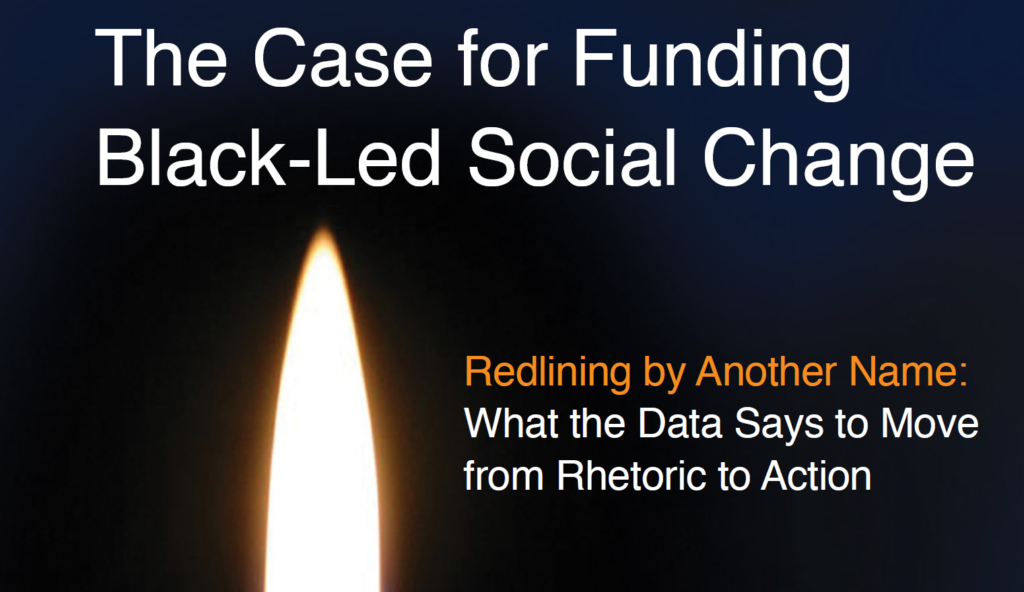The Case for Funding Black-Led Social Change: Redlining by Another Name – What the Data Says to Move from Rhetoric to Action
ABFE: A Philanthropic Partnership for Black Communities (ABFE), recently conducted a study to learn how leaders of Black-led social change organizations in the United States and U.S. Territories describe their interactions with institutional philanthropy. The research had two purposes. The first was to build a body of information on the health and well-being of existing Black social change infrastructure in this country. The second was to use this information to inform the future actions of the Black Social Change Funders Network (BSCFN), as well as to encourage philanthropic staff, consultants and trustees to change the ways they think and act with Black-led organizations (BLOs) and Black communities.

In late 2015, BSCFN was birthed from a partnership between ABFE and the Hill-Snowdon Foundation. In March of 2017, BSCFN released The Case for Funding Black-Led Social Change—its first case statement. In accordance with its primary goal—to help vitalize and strengthen the infrastructure for Black-led social change by advocating for much greater philanthropic investment—BSCFN has developed several critical research questions to answer:
- How much institutional philanthropic funding goes to Black-led organizations in the United States (including U.S. Territories)?
- Given the higher concentrations of Black people in the South and Midwest, how much institutional philanthropic funding goes to Black-led organizations based in these regions?
- How are institutional philanthropic funds that go to Blackled organizations being used?
- Who are some of the key organizations that make up the existing infrastructure of Black-led social change groups, and what are the major needs that institutional philanthropic funding should address?
- How should staff, consultants and trustees in institutional philanthropy change their approaches when working with BLOs and serving Black communities for greater efficiency and impact?
This report focuses on the latter two critical questions.
